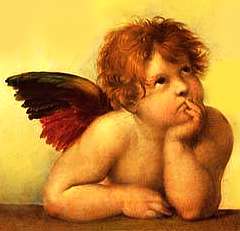The Belle Ferronière is a painting by Leonardo da Vinci, painted in Milan between 1490 and 1499. The Belle (French for "the beautiful one") wears a ferronière, a narrow diadem with an attached jewel, which is worn centered on the forehead. The identity of La Belle is uncertain, but most art historians believe it is a portrait of the Milanese court lady Lucrezia Crivelli. The portrait is now housed in the Louvre Museum in Paris.
But Who Was La Belle Ferronière?
The source situation for the painting is very vague, and therefore the identity of the young woman is still considered unresolved today. In the research on Leonardo, two mutually exclusive theories are discussed. Some say the painting was created between 1490 and 1499 and depicts a Milanese court lady. This view is held by the Louvre, among others. Others consider it a work from the last years of Leonardo's life, when he was at the French court in Amboise (1516-1519). In this case, it is assumed to depict a mistress of the French king.
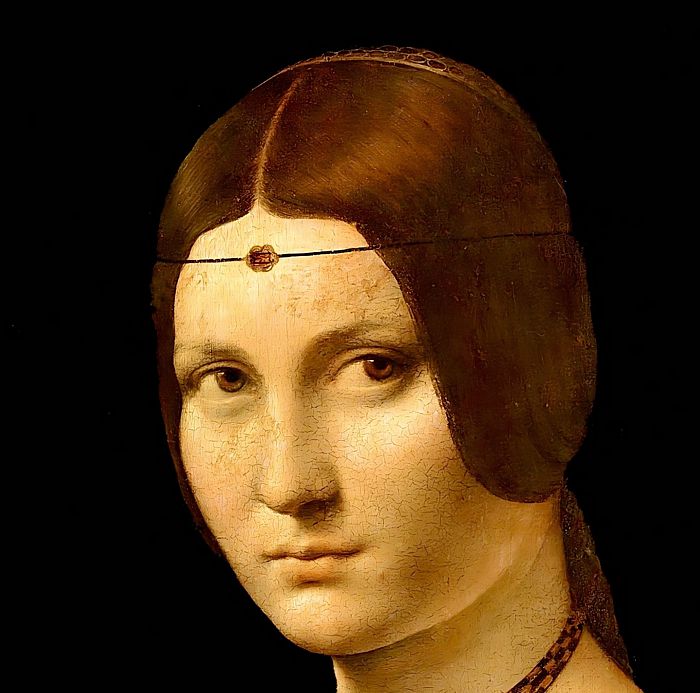
There are several theories woven around this work, which, like others by the artist, is full of symbolism and secrets.
Theory I - A Lady from Milan
The majority of those who place the painting in Leonardo's Milanese period consider it to be the portrait of Lucrezia Crivelli, as do the art historians at the Louvre. Furthermore, it is discussed whether the painting could possibly represent another personality from the Milanese court. The following ladies are raised in question.
Lucrezia Crivelli
This theory regarding the identity of La Belle Ferronière is the most widely recognized today and is mainly supported by the art historians of the Louvre. Lucrezia Crivelli's life is only known in broad outline. Many of the dates of her life are unknown.
Lucrezia came to the court of Milan as a lady-in-waiting to the sixteen-year-old Beatrice d'Este when the influential noblewoman married the Duke of Milan, Ludovico Sforza, in 1491. Ludovico was having an affair with his mistress, Cecilia Gallerani, at the time. During this period, Cecilia was portrayed as the 'Lady with an Ermine' by Leonardo. Four months after the Duke's marriage to Beatrice, his mistress bore him a son, Cesare Sforza (b. 1491). After this, Cecilia was banished from the Milanese court, generously endowed with gifts and property, and married off to a noble servant of Ludovico.
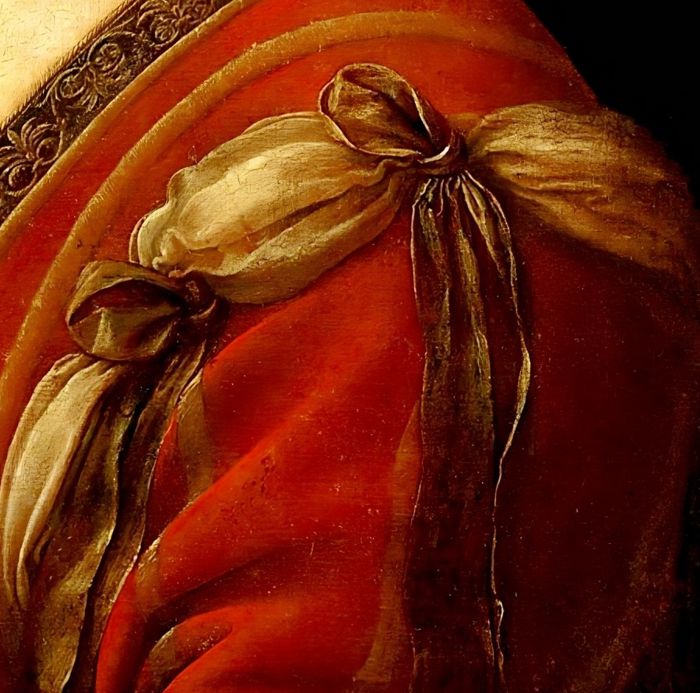
The power-conscious Duke considered his marriage to the educated and cultured Beatrice d'Este unhappy, and therefore took her lady-in-waiting, Lucrezia Crivelli, as his mistress around 1495. His wife attempted to persuade the Duke to banish Lucrezia as well, but he refused.
Duchess Beatrice d'Este bore Ludovico Sforza two children and tragically died in January 1497 giving birth to their third child, as did her newborn. Beatrice lived to be only 22 years old.
The Duke plunged into great mourning for political reasons. However, Lucrezia bore him a common son, Giovanni Paolo I Sforza, only two months after Beatrice's death. The illegitimate son was later legitimized and became the first Marquis of Caravaggio. Ludovico Sforza was driven out of Milan by the French in 1499 and stripped of his power. Louvre historians have found that Lucrezia was pregnant again by the Duke at that time.
The Duke managed to briefly recapture Milan in the spring of 1500 but was betrayed and died in French captivity in 1508.
Lucrezia Crivelli likely lived at the Rocca di Canneto in Mantua from 1500 under the protection of Beatrice's elder sister, Isabella d'Este.
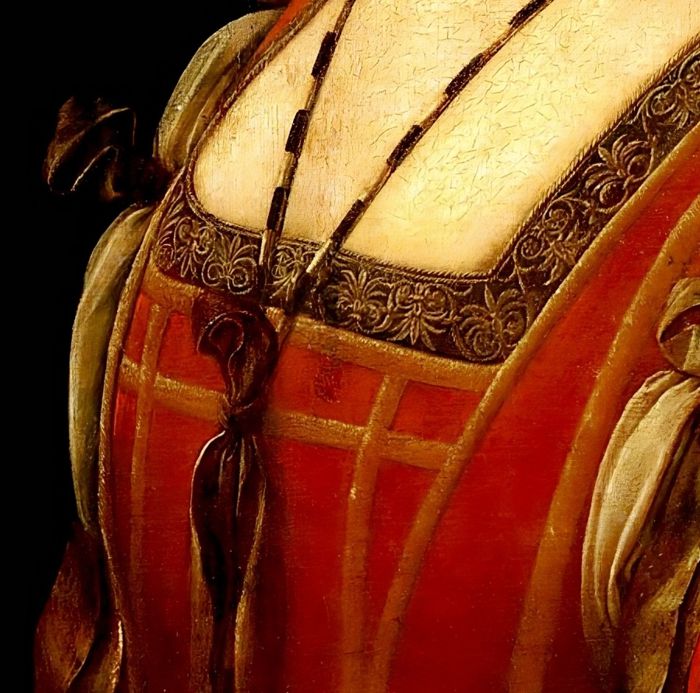
Leonardo may have portrayed another of the Duke's mistresses in Lucrezia Crivelli, as he had previously done with Cecilia Gallerani (the 'Lady with an Ermine'). A poem by Antonio Tebaldeo, in which he praises a painting said to have been made by Leonardo da Vinci of a Lucrezia, is often used to support this thesis. It can be read at the end of this page. Tebaldeo was the tutor of Isabella d'Este, Duchess of Mantua and sister-in-law of the Duke of Milan. He was therefore informed of the news from Milan, including that Leonardo was creating a portrait of Lucrezia Crivelli.
Beatrice d'Este
She was the wife of Ludovico Sforza, who died young, the mother of two of his children, and Duchess of Milan. She was also the younger sister of the influential Duchess of Mantua, Isabella d'Este.
It is reasonable to assume that the Duke of Milan commissioned a portrait of his wife from Leonardo. However, the marriage was considered unhappy:
- Beatrice d'Este was of high nobility and had been raised to be highly cultured, while Ludovico's military family had only been elevated to the nobility two generations earlier. Ludovico's life as ruler of an important duchy was therefore very focused on maintaining power.
- At the time of their marriage, Ludovico's mistress, Cecilia Gallerani, was pregnant with his child.
- During the marriage, he had numerous affairs and several illegitimate children.
- Four years after the wedding, he took Lucrezia Crivelli, his wife's lady-in-waiting, as his mistress. She was pregnant with his child when his wife died giving birth to her son.
Given the unhappiness of Beatrice and Ludovico's marriage, it is unlikely that the Duke would have commissioned Leonardo to paint a portrait of Beatrice.

Theory II - Mistress of the King of France (Bella Ferronière)
According to a second, completely contradictory theory, the painting is assumed not to come from Leonardo's Milanese period, but to have been created in the last three years of his life, when he was at the court of the French king. According to this, it is assumed to be one of the many mistresses of the French King Francis I.
The portrait's name "La Belle Ferronière" is a combination of 'La Belle' (French for 'The Beautiful') and 'Ferronière'. Ferronière is the name given to a narrow diadem with an embedded jewel, worn in the center of the forehead. This type of headwear—narrow bands with precious stones—was typical of the Italian Renaissance. It is often said that the Ferronière headdress was first seen in this painting and owes its name to the sitter, a Madame Ferron or a Ferronière.
What is a Ferronière?
Ferronière is derived from the French word "fer" meaning "iron" and refers to a woman who is professionally related to iron. Therefore, a ferronière could be a female blacksmith or ironmonger. According to the understanding of the time, this certainly meant the wife of a blacksmith or ironmonger.
The Legend of Madame Ferron
The lustful King Francis I is said to have taken the young Madame Ferron as his mistress around 1524. She is said to have been known at court by her nickname "La Belle Ferronière." Her jealous husband, the Parisian lawyer Jean Ferron (sometimes an unknown blacksmith, i.e., Ferronier), is said to have been so furious about this that he decided to take bitter revenge. He went to a famous brothel to deliberately infect himself with syphilis. His wife thus infected the King, who became sterile as a result. Madame Ferron is said to have died about six years later. The King, on the other hand, is said to have suffered for another 23 years until he also died in 1547.
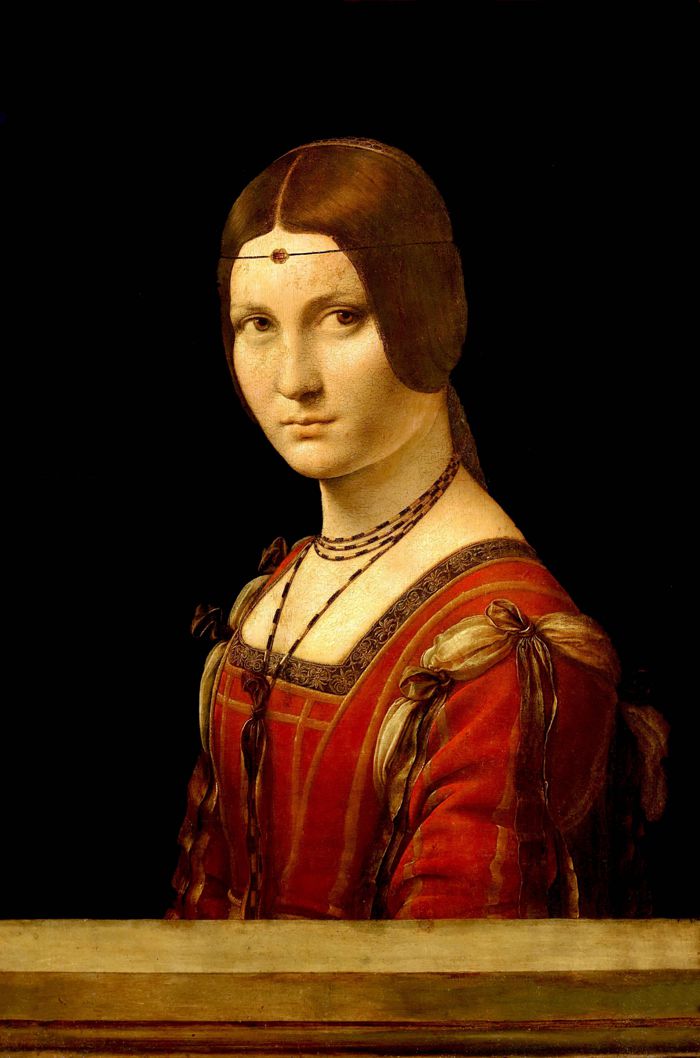
The Truth of the Legend
This legend is often used to prove the existence of a historical Bella Ferronière, suggesting that Leonardo portrayed her. This cannot be true because Leonardo da Vinci died in 1519, but the affair is said to have begun in 1524.
The legend dates back to the life stories of the French nobleman Brantôme, but is by no means historical. Rather, it was part of Brantôme's lifestyle to spread the most scandalous gossip possible about the noble houses of Europe. These superficial accounts were also printed and enjoyed great popularity.
The same legend was also spread by a rather famous physician in Paris. Louis Guyon seigneur de la Nauche, like Brantôme, was famous for his gossip. He also sold his books. Which is surprising, because he achieved fame and reputation as a physician even beyond his life. He introduced a special cure and published several specialized books. Later, he was even elevated to the nobility for it.
Both Brantôme (c. 1537) and Louis Guyon (c. 1527) were still very young when Francis I died in 1547. Brantôme was only about 10 years old, Louis Guyon was already 20. Both may have only heard the court gossip by rumor, if their stories were not completely fabricated. It is important to mention that all stories about a syphilis disease of Francis I can be traced back to these two. There are no other sources for a disease of the king in this regard.
The fact that the ominous syphilis disease must have been a legend is also made apparent by the fact that Francis I still had offspring at an advanced age (Nicolas d'Estouteville, *1545).
Was there a Mistress Belle Ferronière?
There is no official source that mentions a mistress "Belle Ferronière." Francis I was very public about his love affairs, and a historical Bella Ferronière would therefore not have remained hidden. A mistress "Belle Ferronière" probably never existed.
Origin of the Name "La Belle Ferronière"
Although the legend of Madame Ferron does not refer to Leonardo's painting, it is the reason for the painting's current name. The painting "La Belle Ferronière" originally meant another painting in the royal collection, which is still in the Louvre under this name (Louvre, INV 786).
THE WORK
Leonardo da Vinci
around 1490
Oil on wood (walnut)
45 x 63 cm
Musée du Louvre, Paris



